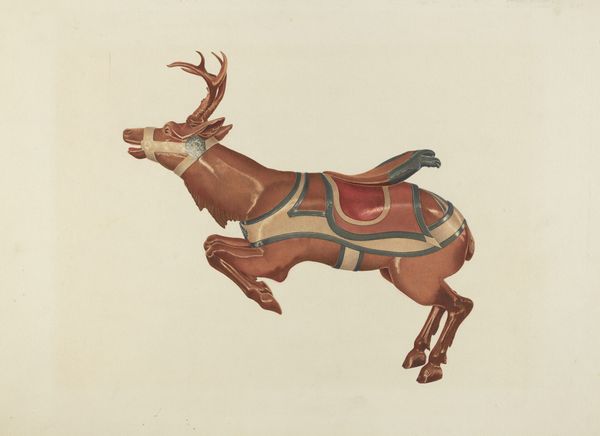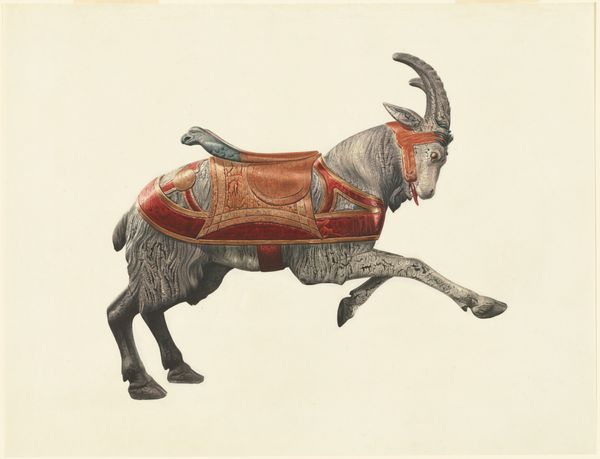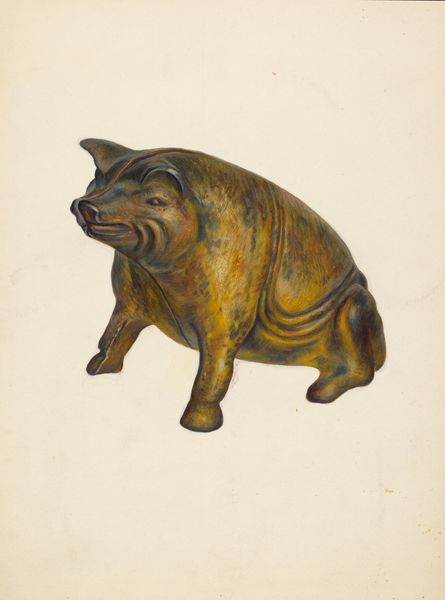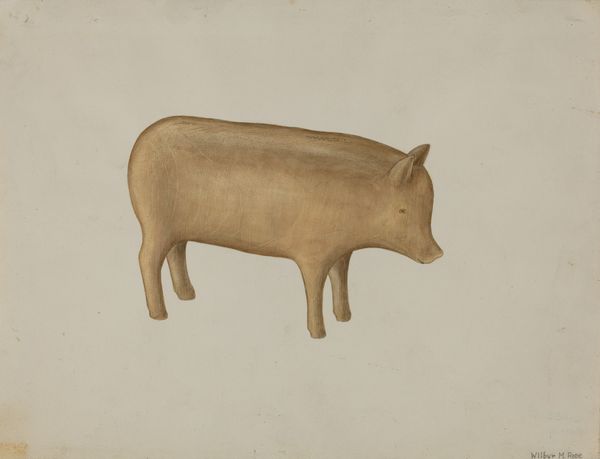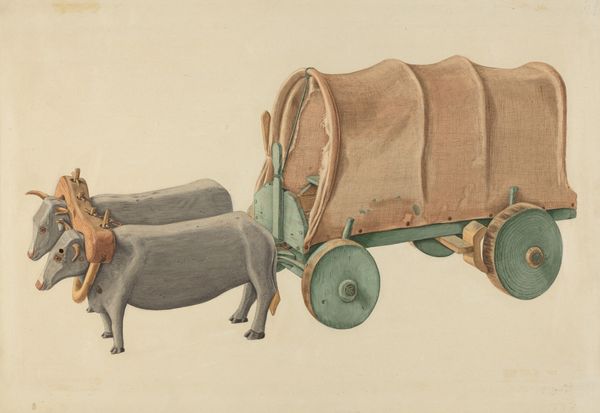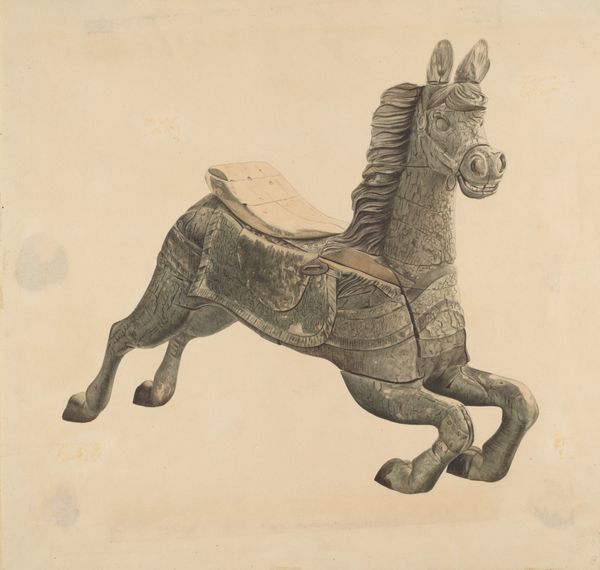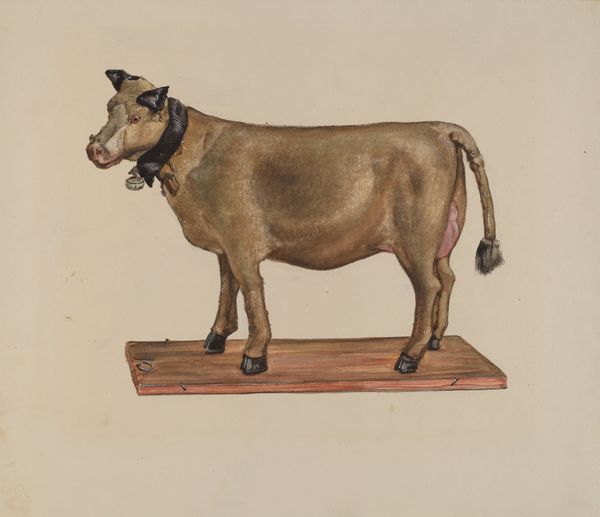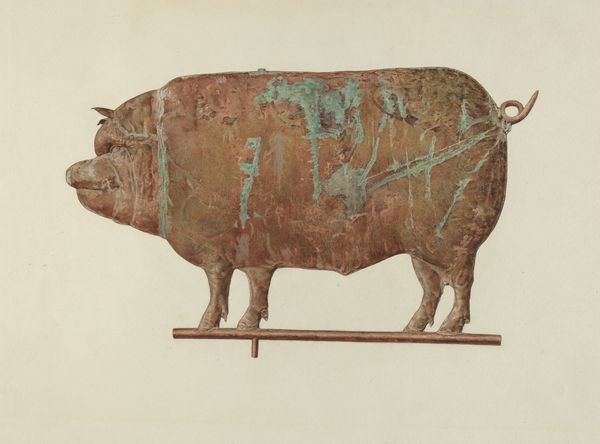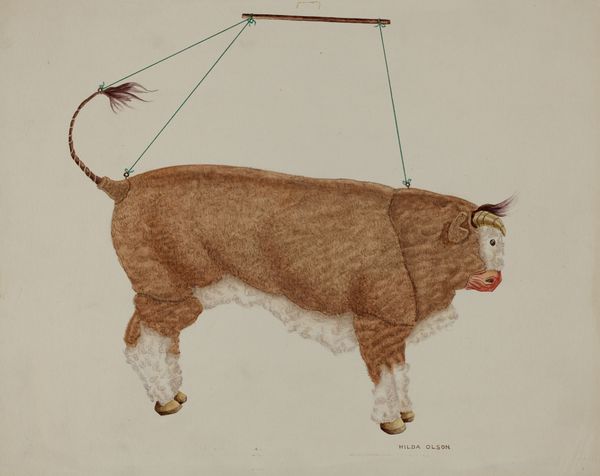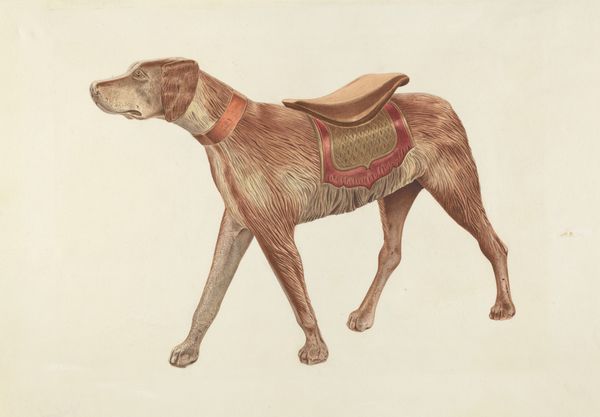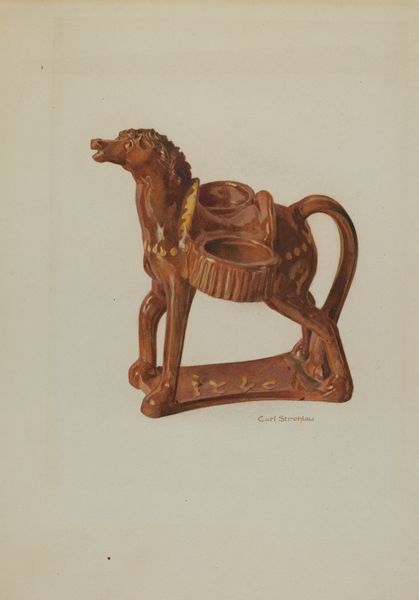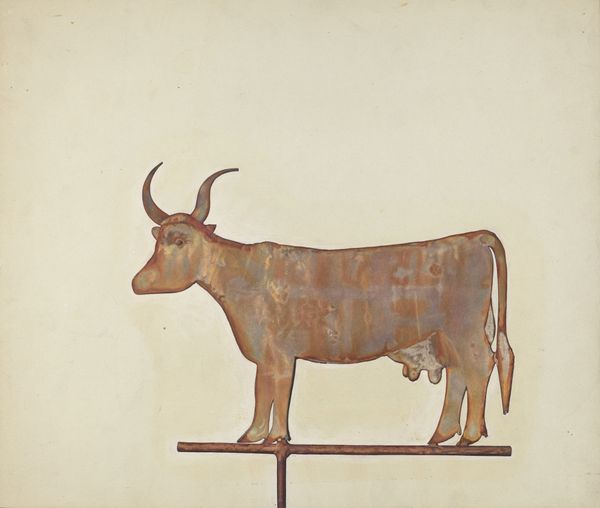
drawing, watercolor
#
portrait
#
drawing
#
figuration
#
watercolor
#
folk-art
#
animal portrait
#
watercolour illustration
Dimensions: overall: 36.1 x 48.9 cm (14 3/16 x 19 1/4 in.) Original IAD Object: 60" long
Copyright: National Gallery of Art: CC0 1.0
Editor: So, here we have Henry Tomaszewski's "Carousel Pig," a watercolor and drawing made around 1939. It's quaint and whimsical. What's interesting is that it captures an object intended for mass appeal and amusement. How would you approach an analysis of this piece? Curator: Immediately, I’m drawn to the intersection of folk art and industrial production inherent in the object. What kind of labor produced this carousel figure originally? Consider the woodcarvers, the painters, and the entire system designed to create amusement for the masses. Editor: That’s interesting. So you're less interested in the pig itself, and more about how it came to be? Curator: Precisely. I would explore the original carousel's manufacturing process. Who owned these carousels, and who enjoyed them? How does this watercolor drawing either reinforce or subvert the initial object’s context within a system of leisure and possibly class distinction? Editor: It sounds like you’re saying the image transforms the meaning just by changing the material through which we see the pig, and inviting these broader questions of social structures to light. Curator: Yes. The medium informs the message. It’s also critical to note Tomaszewski's own social position and intention in depicting this figure. Was he romanticizing folk art, commenting on commercialization, or something else entirely? Understanding the social and economic backdrop to both the carousel's creation and Tomaszewski's art is key. Editor: Okay, I think I see that now. The process of art-making reflects its own time as much as the image reflects the time in which it was initially made. Curator: Exactly! By focusing on material and social forces, we see this 'simple' image reveals layers of cultural production and meaning.
Comments
No comments
Be the first to comment and join the conversation on the ultimate creative platform.
